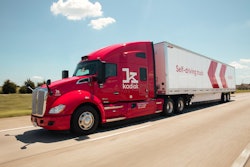As autonomous truck technology continues to develop, policymakers in Washington are attempting to gain a better understanding of the technology, its impacts on safety, the trucking workforce, the economy and more. One question in particular reared its head on Wednesday, Sept. 13, in a hearing of the Highways and Transit Subcommittee of the U.S. House’s Transportation and Infrastructure Committee: Will autonomous tech cost drivers their jobs?
Testifying during the hearing were Chris Urmson, co-founder and CEO of autonomous truck maker Aurora Innovation; Jeff Farrah, executive director of the Autonomous Vehicle Industry Association (AVIA); Chris Spear, president and CEO of the American Trucking Associations; and Cathy Chase, president of the Advocates for Highway and Auto Safety. Notably missing from the hearing -- during National Truck Driver Appreciation Week, no less -- was an actual truck driver or group representing operators' interests, despite the technology's potential to threaten the truck driving profession itself in the future.
Spear, in his opening testimony and numerous times throughout the hearing, stood by ATA’s long-held position that a driver shortage exists, with the industry short 78,000 drivers today and needing to bring in 1.2 million new truck drivers over the next decade to replace an aging trucking workforce and meet freight volume projections, he said.
Driver displacement because of automation is a “myth,” Spear added. There is “plenty of room for innovation to play a role” moving forward. Spear said particularly with SAE Levels of Driving Automation 2-4, which still require a driver in the cab, technology can help truck drivers by improving their awareness and responsiveness.
[Related: California driverless vehicle ban heads to governor's desk]
Asked directly by Rep. Pete Stauber (R-Minnesota) if he would look a truck driver in the eye and tell them they would not lose their job because of automation, Spear appeared confident: “I would. I wouldn’t hesitate. In fact, I think it’s going to empower that driver -- certainly [SAE autonomous] levels 2, 3, 4, are going to make them more marketable, give them better performance. These are all exciting inroads that we want to see in our industry. If we were flooded with drivers, if we had an abundance of people behind the wheel, we would be having this conversation very differently than we are today. But I do believe there is a role for innovation to play without displacing those drivers. I’d look them in the eye and tell them, ‘You’ve got nothing to be concerned about.’”










